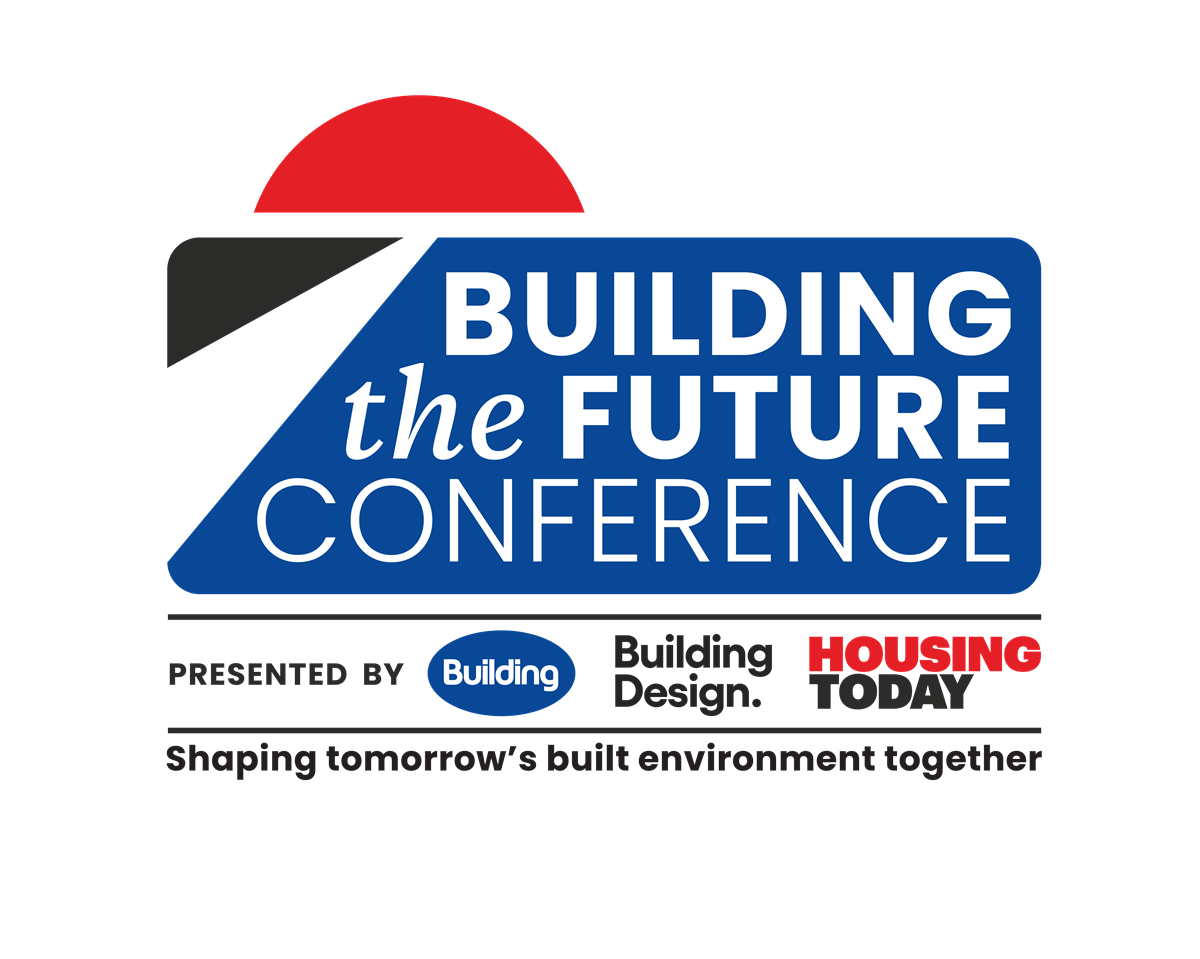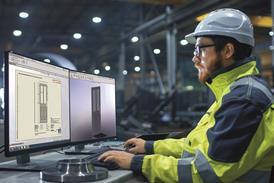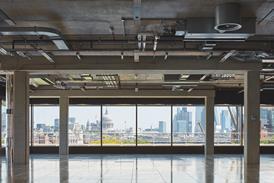Today's construction industry may have different motivating factors, but quick, low cost, easily repeatable solutions are once again the name of the game. The Government is embarking on an unprecedented public spending spree and wants hospitals, housing and schools upgraded as quickly as possible – certainly in time for the next election! Put skills shortages and the whole Rethinking construction agenda into the frame and it is small wonder that there has been a massive boom in offsite manufactured solutions for the construction industry.
In May, major players from the prefab world gathered at the Building Research Establishment (BRE) in Watford for a unique, week-long event – Offsite 03. Exhibitions allowed contractors to look at the latest in the market and a full seminar programme examined a wide range of topics from training issues, regulatory implications and design quality, as well as solutions for specific sectors such as housing, healthcare and education.
Among the seminar programme was an afternoon dedicated to building services. As well as the latest innovations from m&e contractors N G Bailey and AMEC Building Services, clients and manufacturers presented their views on how to stimulate take-up of pre-engineered systems.
Seminar chair David Butler, principal consultant with the BRE's environmental engineering centre kicked things off with an overview of where the technology is today. Pre-assembly of plantrooms has been around since the 1980s and is increasingly widespread; also springing up on sites around the country are prefabricated distribution of heating, cooling and wiring and pre-assembled terminal units, for example multi-service chilled ceilings.
All three approaches lead to well documented advantages such as the transfer of assembly to factory conditions, with reduced defects, less need for labour supervision and less hot working on site. Congestion and concurrent working on site is also reduced, and with less time needed for testing and commissioning, programme uncertainty is minimised. A factory-designed optimum layout may also reduce long-term maintenance costs, however increased sums for cranage and special enclosures have to be considered, alongside delivery logistics.
As David Butler points out there are some constraints and issues that have perhaps held back wider take-up. So far, while m&e contractors can see the benefits, there has been limited enthusiasm from designers, and consultants tend to reduce the opportunity for generic components. There is a perception, not necessarily deserved, that first costs will be higher with prefabrication, there is limited industry capacity at present and there is no agreed methodology for demonstrating the overall benefits.
But benefits there most certainly are. At City Point in London's Moorgate, extensive use of prefabrication of services achieved a 25% reduction in programme time, a 30% reduction in manpower on site, a 50% drop in the need for on-site storage, a 40% lower accident rate than average and fewer site deliveries.
Let’s get efficiency in the design process, if we are to get efficiency in the build process
Cal Bailey, N G Bailey
As to the costs issue, yes first costs can be higher than usual when opting for the prefab route. One rooftop plantroom came out at £344 300 when largely prefabricated; an estimate for a typical conventional installation was £320 700. However, the shorter project time and quality benefits need to be considered.
However, a prefab boiler system came out at £32 400, a saving of £3800 over the site-based approach. The programme was also reduced from eight weeks to two. Similarly, a four-pipe fan coil unit cost £104 300 if assembled conventionally, but only £87 600 if prefabricated.
One client who needs no convincing of the arguments in favour of prefabrication is Bill Wright, manager of the engineering design team at Waitrose and the John Lewis Partnership. With 26 stores, 140 supermarkets, three factories, clubs and hotels and a farm to its name, the group is a significant client and is currently opening new outlets at a rate of around ten a year. Wright describes John Lewis as an "intelligent client, very cost conscious, who knows what it wants".
The group has been "dabbling" with prefabrication, initially with wiring looms and busbar. Wright sees wiring looms as "quick and easy to install, potentially cheaper and flexible". Minus points are the training required, the fact that the contractor has to buy in to the concept and also it does not suit all installations.
John Lewis utilises around 20 km of busbar in a typical store. Again, it is flexible, quick and easy to install and has a low labour cost. Not so good are the high capital cost and the potential for damage. Nevertheless, Wright opts for busbar above and below the soffit for flexibility of lighting and small power configuration.
Wright is also looking at switchboards and switchrooms as well as plantrooms, comms rooms and lifts. For lifts, Wright explains that the 10% cost premium for prefabrication is well worth it to reduce the programme from 12-16 weeks to just two weeks and take the construction off the critical path. Any programme reduction that leads to an earlier opening for the store obviously will increase profits.
"Services engineers know the benefits of prefabrication, but the big problem is the builder," says Wright. "Installation times will come tumbling down but there is no point if other trades don't follow suit. It takes a combined effort to reduce costs and time."
There is a danger that client expectations are outstripping the ability of the industry to deliver
George Adams, Amec
Cal Bailey, prefabrication director with N G Bailey, told the audience about the lessons learnt from its experience in offsite manufacture following the company's decision to open a dedicated factory in Bradford a few years ago. Initial forays with prefab four-pipe fan coil units at a call centre for Yorkshire Water (deliveries down to 19% of traditional; installation time down to 27%) and m&e modules for Morrison supermarkets (deliveries down to 24% and installation time down to 38%) gave the firm the confidence to extend the philosophy to hospitals, hotels and offices. A data centre project for BT aptly demonstrated how the use of underfloor modules (which can be turned on their end for risers in less heavily serviced areas) again brought benefits in terms of deliveries and programme time.
So what lessons has N G Bailey learnt? Cal Bailey was passionate about redesigning the design process. "Projects are designed many times over. The consultant does a concept design, we do a detailed design, then it is value engineered. Let's do it early, do it once and do it together," urged Bailey. "We have to stop changing the design if we are to finish when the client wants us to. Let's get efficiency in the design process, if we are to get efficiency in the build process."
Bailey also wants to see more use of standard components. "The US experience makes sense – it saves time, errors and money. We should formulate a standard spec for risers, plant space etc and stop specifying differently on every job."
Offsite manufacture requires a different set of skills from construction and a different culture needs to be instilled within the firm. "Manufacturing is about value not cost, repeatability not one-offs and product not project," explains Bailey. "If we adopt a manufacturing culture based on proven solutions, projects could be completed in less than half the time they are now. It may cost a bit more up front but value to the client is enhanced."
It is clear that the value message is getting through to clients. N G Bailey has doubled its prefab business each year and it now accounts for around one-third of output. George Adams of Amec Building Services agreed that interest is growing "intensely" on major projects. "This will change the way we deliver building services," predicts Adams. Indeed, Amec has a target of 60-70% modularisation within building services projects. "Under 20%, and the programme is at risk in terms of time and cost," claims Adams.
Such levels of modularisation will see a 30% reduction in Amec's labour requirements (rising to 70% on some projects), typical programme reductions of six months and a cost certainty of 95%.
Source
Electrical and Mechanical Contractor
Postscript
For more on the presentations, visit the web site at www.offsite03.co.uk




















No comments yet